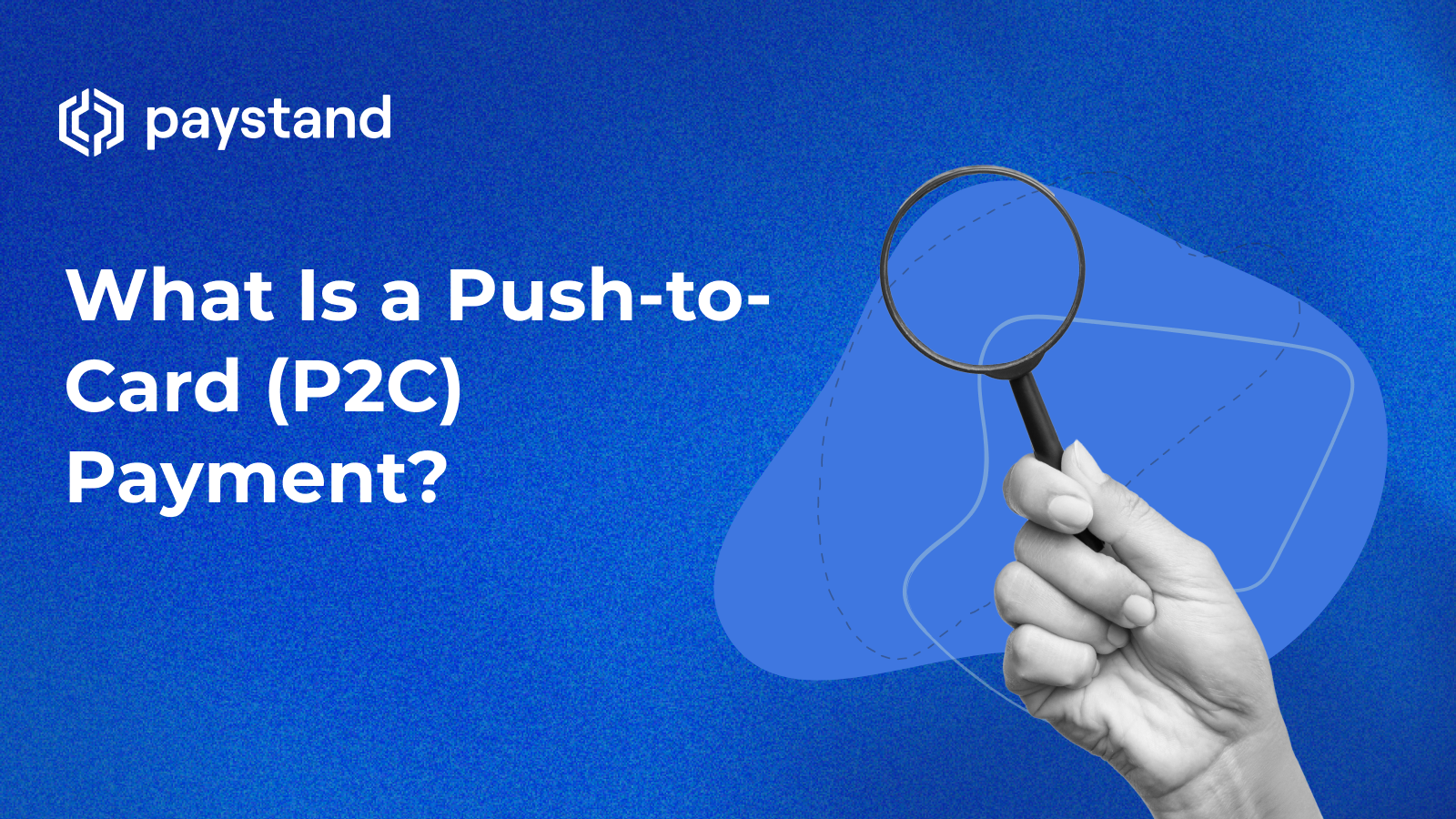What Is a Push-to-Card (P2C) Payment?

Table of Contents
- What Is a Push-to-Card (P2C) Payment?
- How Do Push-to-Card Payments Work?
- How Are Push-to-Card Payments Used?
- What Are the Advantages of Push-to-Card Payments?
- What Is an Example of a Push Payment?
- How to Push a Payment to a Credit Card
- Why Are Push-to-Card Payments Important?
Key Takeaways
- Definition: Push-to-card payments allow senders to transfer funds directly to a recipient’s debit or credit card, offering an alternative to pull payments.
- How It Works: These payments leverage card networks like Visa and Mastercard to process real-time disbursements securely and efficiently.
- Use Cases: Push-to-card payments are widely used for peer-to-peer transfers, insurance claim payouts, gig worker earnings, and contractor payments.
- Advantages: Instant fund availability, enhanced customer satisfaction, increased card usage, and ease of use make push-to-card payments a preferred option over traditional methods.
- Importance: As demand for real-time digital solutions grows, push-to-card payments meet consumer and business expectations for speed, security, and versatility.

What Is a Push-to-Card (P2C) Payment?
A push-to-card payment, also known as a digital disbursement or debit card disbursement, allows a payer to send money directly to a recipient’s debit card. Unlike pull payments—where a payee pulls funds from the payer’s account—push-to-card payments put the payer in control, actively initiating the transfer.
Push-to-card payments leverage card networks like Visa or Mastercard to provide real-time transfers, enabling recipients to access funds immediately.
How Do Push-to-Card Payments Work?
Push-to-card payments reverse the traditional flow of money through card networks. Here’s how they work:
- Initiation: The payer starts the transfer using the recipient’s debit card details.
- Processing: Funds are sent from the payer’s bank, through the card network, to the recipient’s bank.
- Real-Time Access: The recipient can access the funds immediately via their debit card.
This process uses existing card network infrastructure, ensuring a secure and efficient transfer. Fraud detection, anti-money laundering (AML), and Know Your Customer (KYC) measures are also incorporated for added security.
How Are Push-to-Card Payments Used?
Peer-to-Peer (P2P) Payments
Apps like Venmo and Cash App use push-to-card technology to enable fast money transfers between individuals.
Business Disbursements
Companies use push-to-card payments for gig worker payouts, insurance claims, and contractor payments, ensuring quick fund access and increased satisfaction.
Card Network Solutions
Visa Direct and Mastercard Send provide the backbone for many push-to-card services, enabling businesses to integrate this capability seamlessly.
What Are the Advantages of Push-to-Card Payments?
- Instant Transfers: Recipients access funds immediately, offering convenience unmatched by bank to bank transfers.
- Ease of Use: Only card details are needed to initiate payments.
- Better Customer Experience: Faster payouts increase satisfaction for customers, gig workers, and contractors.
- Increased Engagement: Push-to-card payments drive card usage, benefiting card issuers.
- Cost-Efficient: Faster than traditional methods, reducing operational delays and associated costs.
What Is an Example of a Push Payment?
A common example is a gig worker receiving their earnings instantly after completing a task via a digital platform, such as Uber or DoorDash. These payments are pushed directly to the worker’s debit card, bypassing traditional payroll systems.
How to Push a Payment to a Credit Card
To push a payment to a credit card:
- Select a payment provider offering push-to-card capabilities (e.g., Visa Direct).
- Provide the recipient’s credit card details.
- Authorize the transaction, and funds will be sent directly to the card account.
Why Are Push-to-Card Payments Important?
Push-to-card payments meet the growing demand for real-time digital payment solutions. They benefit financial institutions, social platforms, and businesses by offering:
- Speed: Real-time transfers cater to today’s fast-paced lifestyles.
- Security: Built-in fraud prevention ensures safe transactions.
- Versatility: Suitable for P2P, B2B, and B2C transactions.
Younger generations, accustomed to instant services, have driven the widespread adoption of push-to-card technology, making it an essential tool for modern financial systems. Ready to learn more about the future of finance? Check out our latest ebook, The Future of Finance 2025.





%20(1)%20(1).jpg?width=100&height=100&name=IMG_3752%20(1)%20(1)%20(1).jpg)